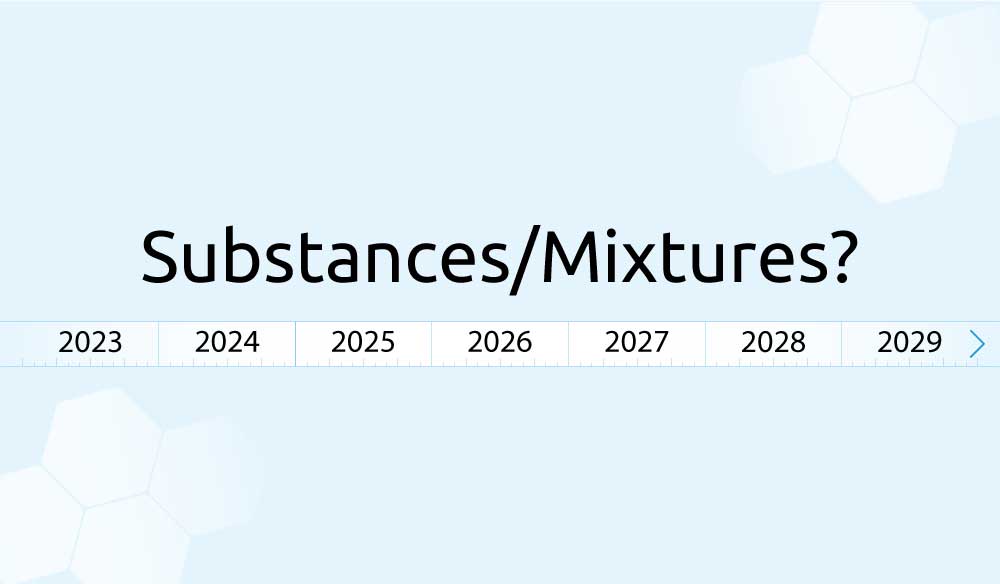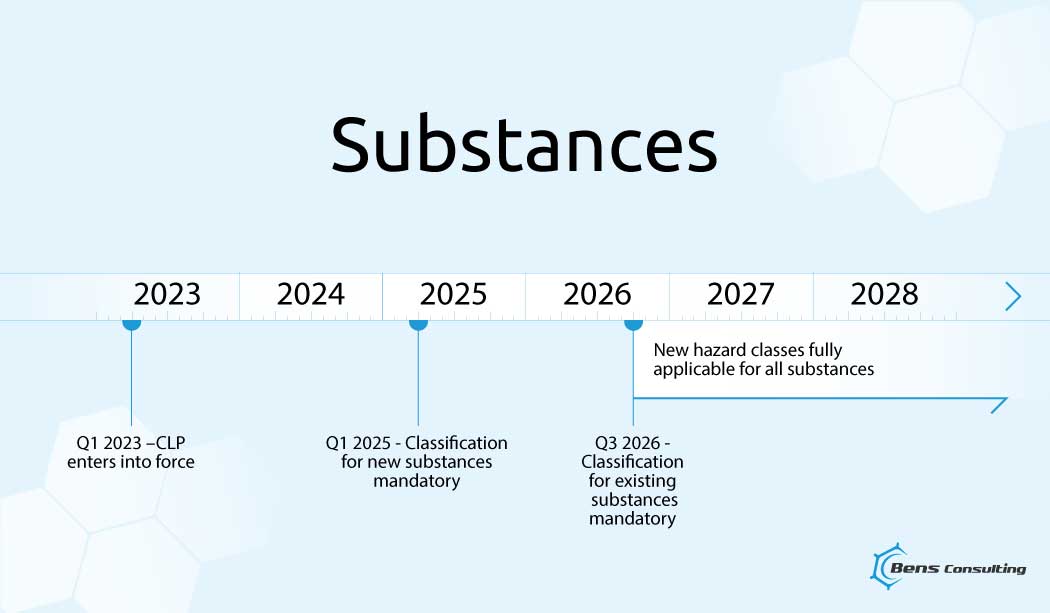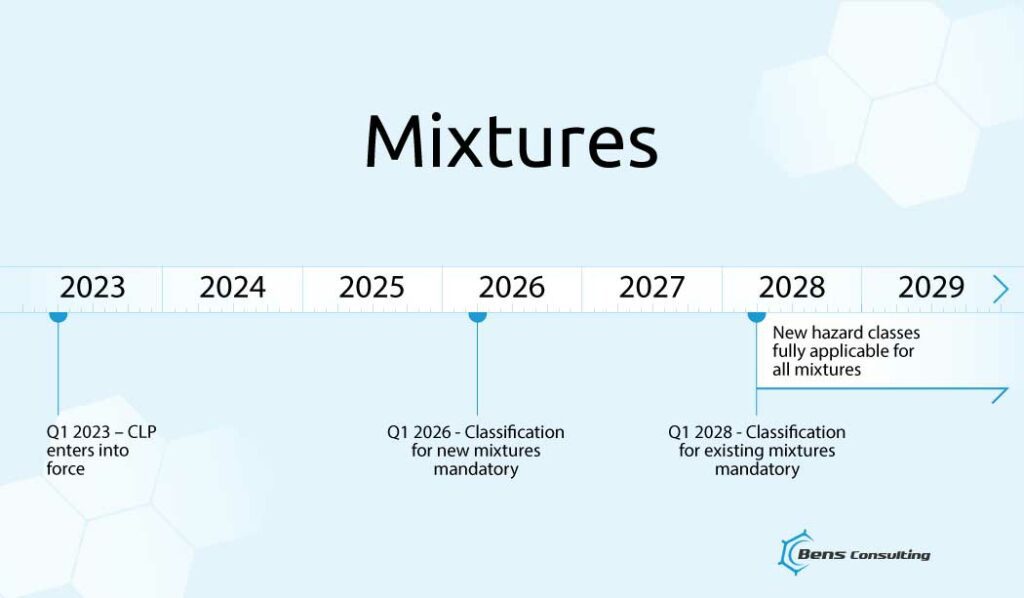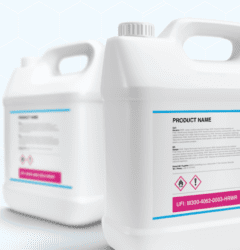03 Jan

The Commission expects this Act to enter into force early next year. Today, we’ll look in the details of transitional periods for adoption of the new criteria. And if you want to know what changes were made than I suggest you read this blog post.
Let’s start with the easy part. New substances will have to be classified according to the new regulation 24 months after it enters into force.
What about substances placed on the market before this 24-month deadline? In this case you have an additional 18-month transitional period. For example, substances placed on the market in 2024 benefit from a prolonged transitional period until Q3 2026.

In “worst” case scenario this could result in prolonging the deadline for substances on the market for an unbelievable 3,5 years. Such transitional periods are not a novelty in the CLP Regulation, and are very similar to the PCN deadlines.
For mixtures, the transitional period is even longer than for substances.
New mixtures will benefit from the 36-month-long transitional period, and for mixtures already on the market this period will extend for 24 months to a total of 60 months. Let’s put this in perspective with an example: all mixtures placed on the market before Q3 2026 can be classified the “old” way until 2028!

Just to be crystal clear – you can start using the new hazard classes as soon as the new CLP enters into force (20 days after official publication). According to my experiences the sooner you adopt to the changes, the lesser the worries in the future.
In case you’re out of time and low on energy than drop me an e-mail. Maybe we can help you like we did other companies like yours. Contacting me won’t cost you a cent but could save you lots of time.



Bine Ledinek